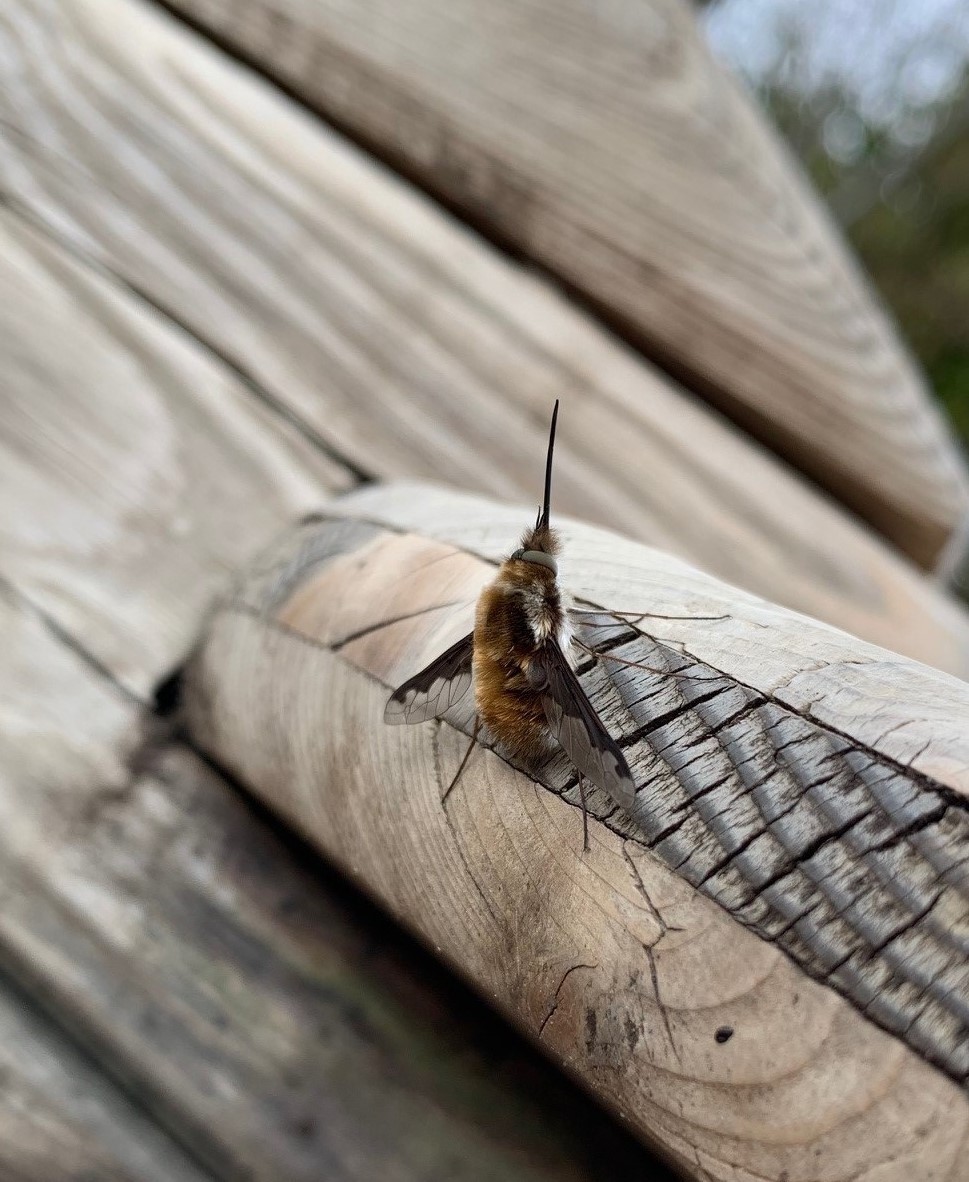Bee flies causing a buzz this spring

Bee fly sightings are on the increase around site and we can’t get enough of these quirky looking insects.
With their fuzzy bodies, patterned wings and unusually long proboscis (or tongue), they can be found basking in sunny spots or feeding on flowers during April and May.
This one was soaking up the rays in our play area and we’ve had reports of them elsewhere too.
Did you know?
- They look like bees, but bee flies are in fact true flies (from the family Bombyliidae).
- There are four species of Bombyliidae in the UK and the most common is the dark-edged bee fly.
- They are harmless to humans, but if you’re a beetle or wasp egg you’d better watch out, as bee fly larvae is a parasitoid and will feast on you!
- Approximately 1cm in length, the bee fly uses its prominent proboscis - the long appendage on its head, which in invertebrates is a sucking mouth part - to drink nectar from flowers, often while hovering, and can even rotate its body in flight. Amazing!
- Flowers with long nectar tubes such as primroses and lungworts are particular favourites, and bee flies are thought to be important pollinators of these.
Want to visit and see a bee fly for yourself?
If you'd like to visit Washington Wetland Centre, book now or plan your visit online



